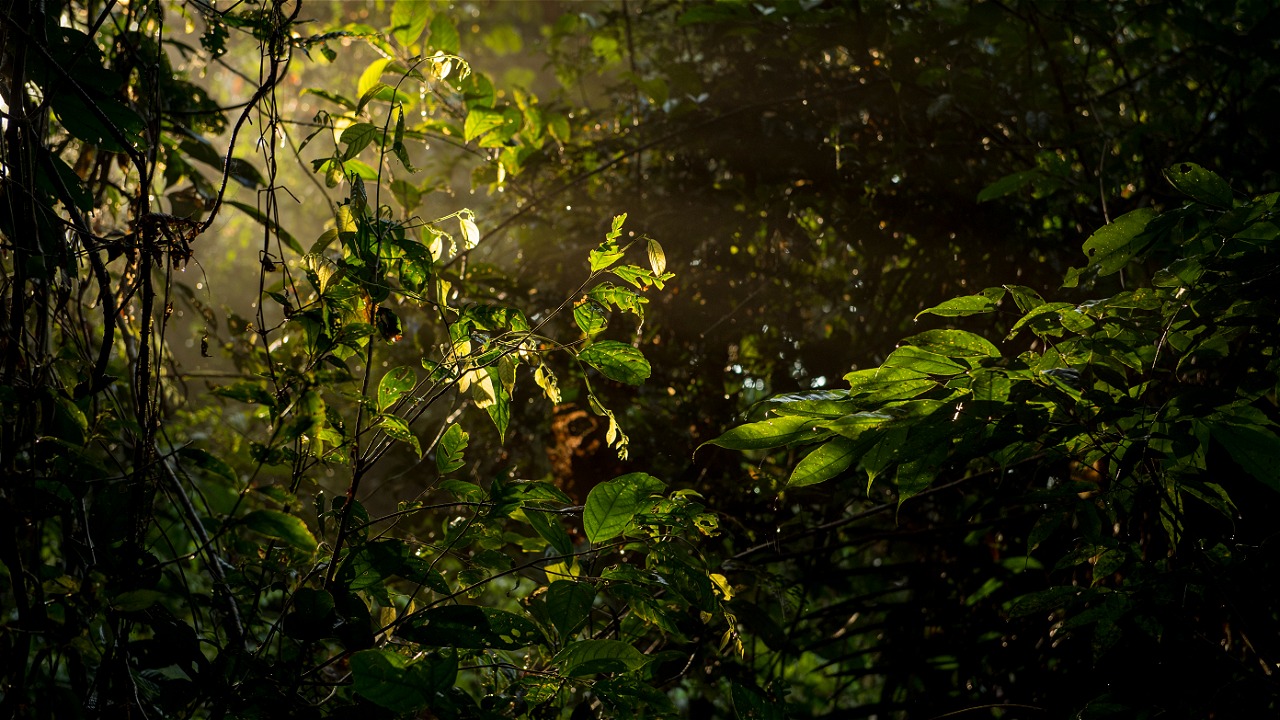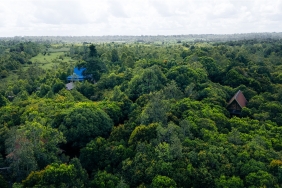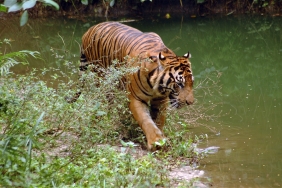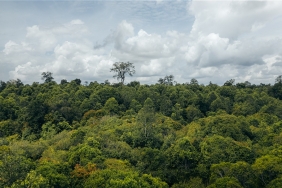THIRTY HILLS, THE LAST LOWLAND FOREST ECOSYSTEM IN CENTRAL SUMATRA
The Bukit Tigapuluh National Park (TNBT) stretches between Riau Province and Jambi Province in the central part of Sumatra Island. It is the only remaining representative unfragmented low land tropical rain forest ecosystem in Central Sumatra.
First established in 1995 with an area of 127,648 Ha, TNBT is the first conservation area in Indonesia that was established from land use change. In the past the TNBT area was two protected forest areas, Haposipin Protection Forest in Riau Province, and Sengkati Batang Hari Protection Forest in Jambi Province, surrounded by an active Limited Production Forest (HPH) area. In 20202, through the Minister of Forestry Decree Number: 6407/Kpts-II/2002, the TNBT area was expanded to 144,223 Ha.
Completely separated from the Bukit Barisan mountain range, Bukit Tigapuluh has a unique ecosystem. With an altitude between 60-843 meters above sea level, the TNBT area is hilly, with a transitional ecosystem between tidal swamp forest and mountain forest. This makes TNBT have a very diverse level of biodiversity, even referred to as one of the highest in the world.
There are more than 1500 species of flora that can be found here. Some of them are endemic flora, such as the Tiger-faced Mushroom (Rafflesia hasselti) and Salo (Johannesteijmania altifrons) a rare giant-leaved palm, which is thought to be found only in Bukit Tigapuluh. The national park is also a conservation area for three - out of four - key Sumatran species, namely the Hariamau, Orangutan and Sumatran Elephant. Not only that, the TNBT is also home to more than 500 species of birds and other mammals.
There are three communities living around and within Bukit Tigapuluh National Park, namely the Malay community, Orang Rimba or Suku Anak Dalam, and the Talang Mamak Native Tribe or often referred to as the Old Malay Tribe. The Malay community lives outside the area, while the Orang Rimba and Talang Mamak have inhabited the wilderness of Bukit Tigapuluh, long before this area was designated as a National Park.
The Orang Rimba live a nomadic life, moving through the natural forest and relying on forest resources to survive. The Talang Mamak live a sedentary life, inhabiting areas along the Batang Gansal river, which cuts through the national park. Until 2015, there were at least 319 families of the Talang Mamak tribe living in Bukit Tigapuluh National Park.
The Talang Mamak tribe lives from gathering forests, looking for various forest products with economic value, such as Jernang and Klukup rattan, areca nut, petai, durian, as well as forest honey from the Sialang Tree. But lately, the Talang Mamak community has also begun to cultivate agriculture such as field rice, and rubber plantations.
The presence of the community in the national park area, encourages zoning arrangements that are slightly different than other national park areas. In addition to the Core zone, Jungle zone, Utilization zone and Rehabilitation zone, TNBT has a special zone, namely the Traditional zone where people live.
The former HPH land around the national park is now generally used as oil palm plantations. Causing access to the national park area is very open and easy to reach. Almost the entire area has an entrance road network and is surrounded by many villages. This condition makes TNBT vulnerable to various external disturbances, such as forest encroachment, timber theft and wildlife hunting.
WWF-Indonesia was once one of the parties that initiated the establishment of Bukit Tigapuluh National Park. Now WWF again supports Bukit Tigapuluh National Park in managing the area, through various patrol activities, scientific activities and monitoring of animals, especially Sumatran Tigers.
From September 2016 to July 2017, WWF-Indonesia Central Sumatra collaborated with the National Park Office to conduct Carbon Valuation measurement activities in 17 locations spread throughout the national park area.
In October 2017, WWF-Indonesia and the Bukit Tigapuluh National Park Center also conducted a joint expedition. The aim was to update data and information related to biodiversity in Bukit Tigapuluh. This expedition also involved various elements of society, as well as members of the TNI and Polri. Activities carried out include socialization of area boundaries to communities in special zones, and monitoring animals by installing 6 camera traps in the habitat restoration area at Keritang Resort, Riau.
With good forest conditions, Bukit Tigapuluh National Park is a great hope in the conservation of endangered species, such as the Sumatran Hariamau. However, there are still many challenges faced, including the limited number of Forest Police (polhut) personnel, and the lack of monitoring facilities and access to communication, making it difficult to immediately disseminate information if there is a violation of the law in the area. (RD)





